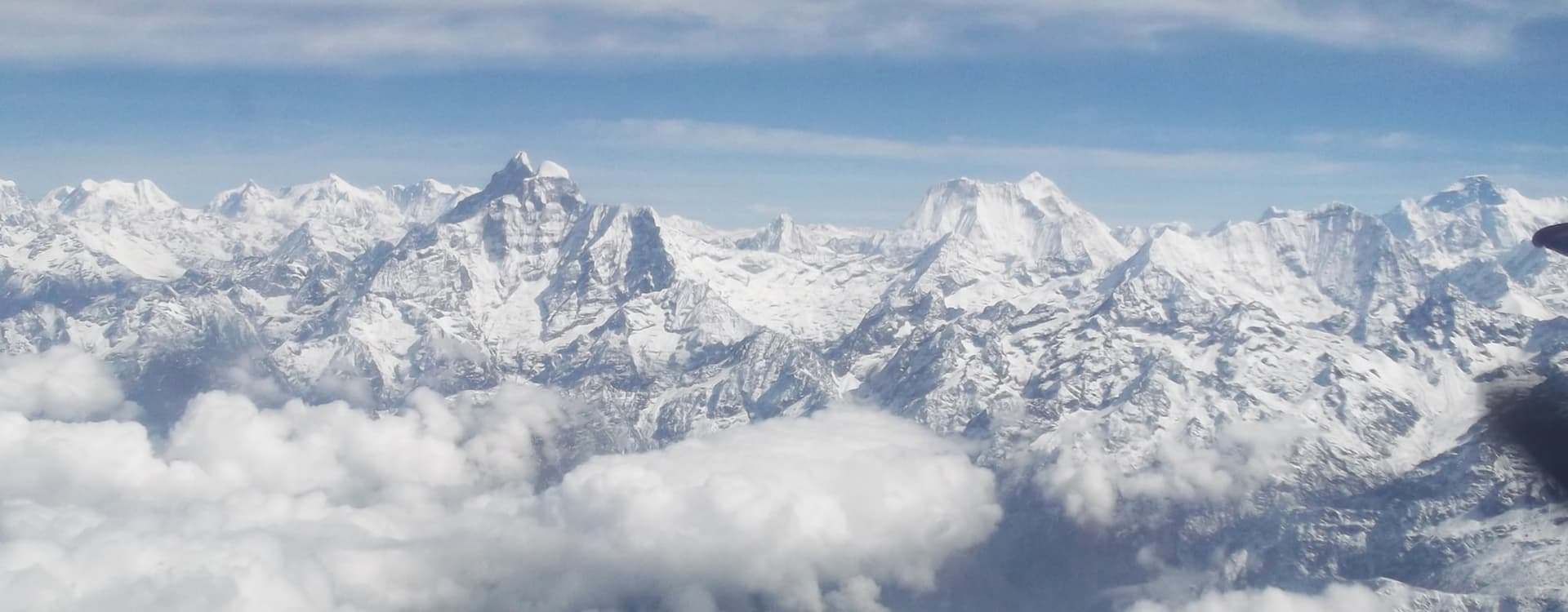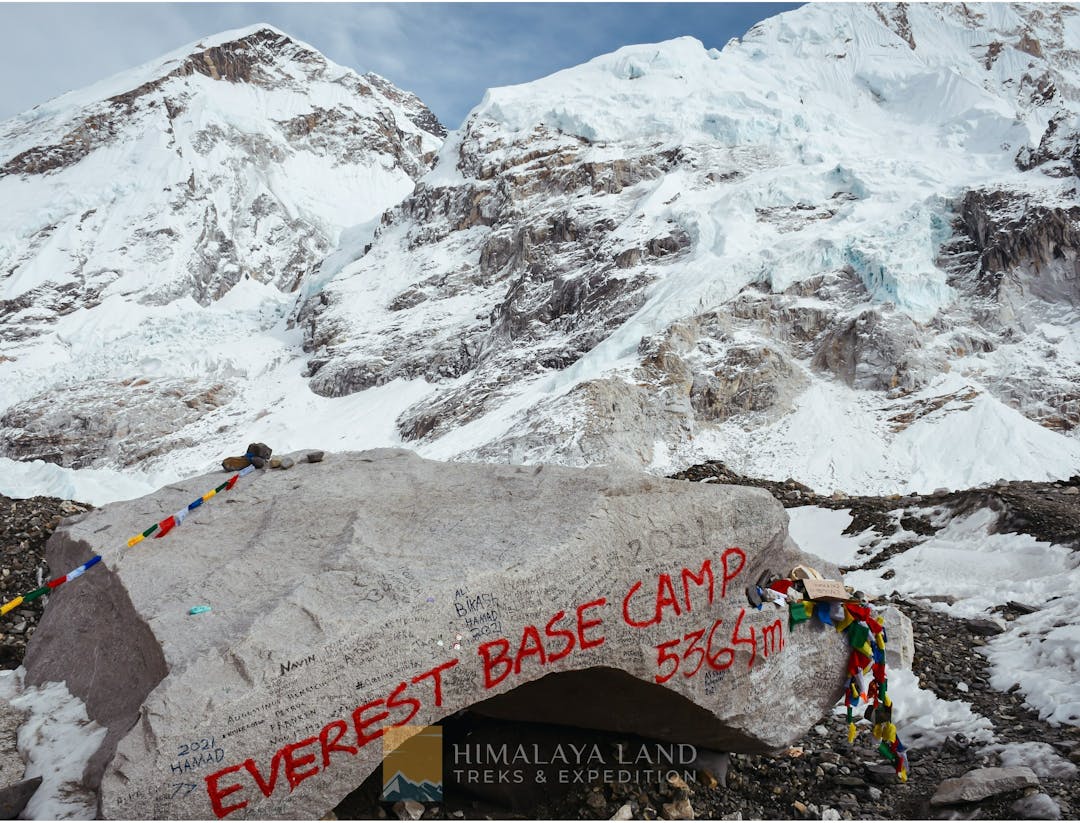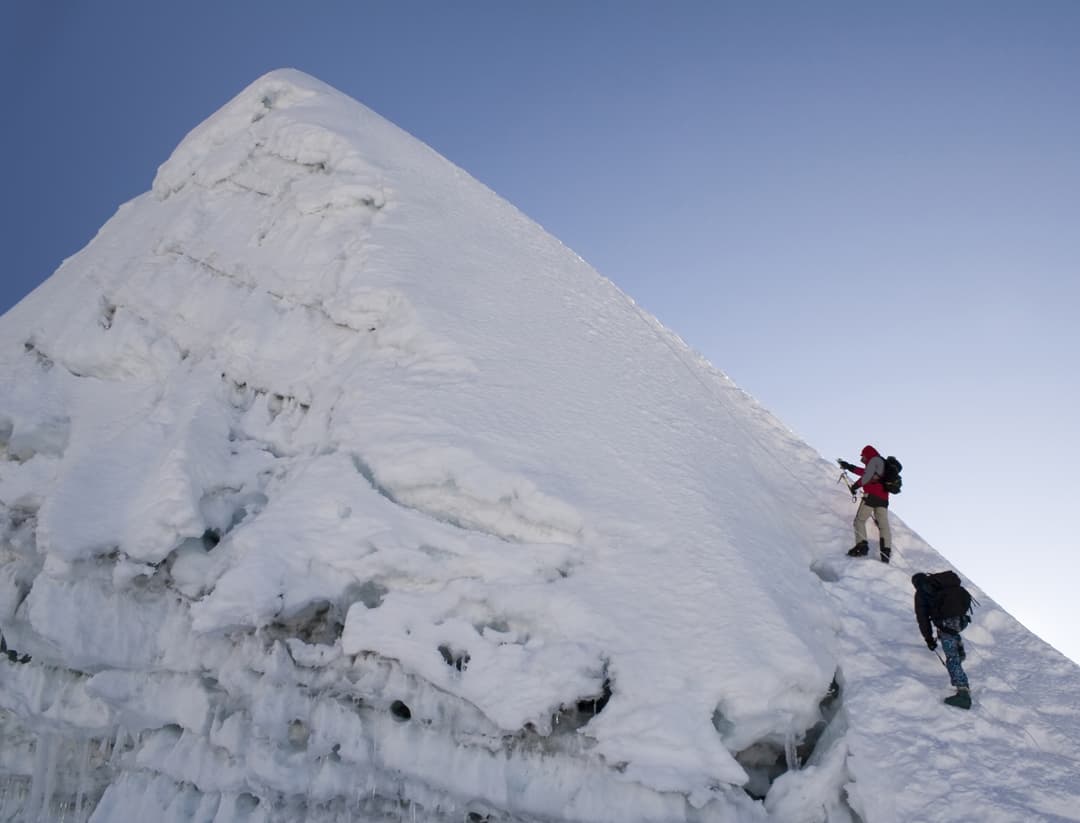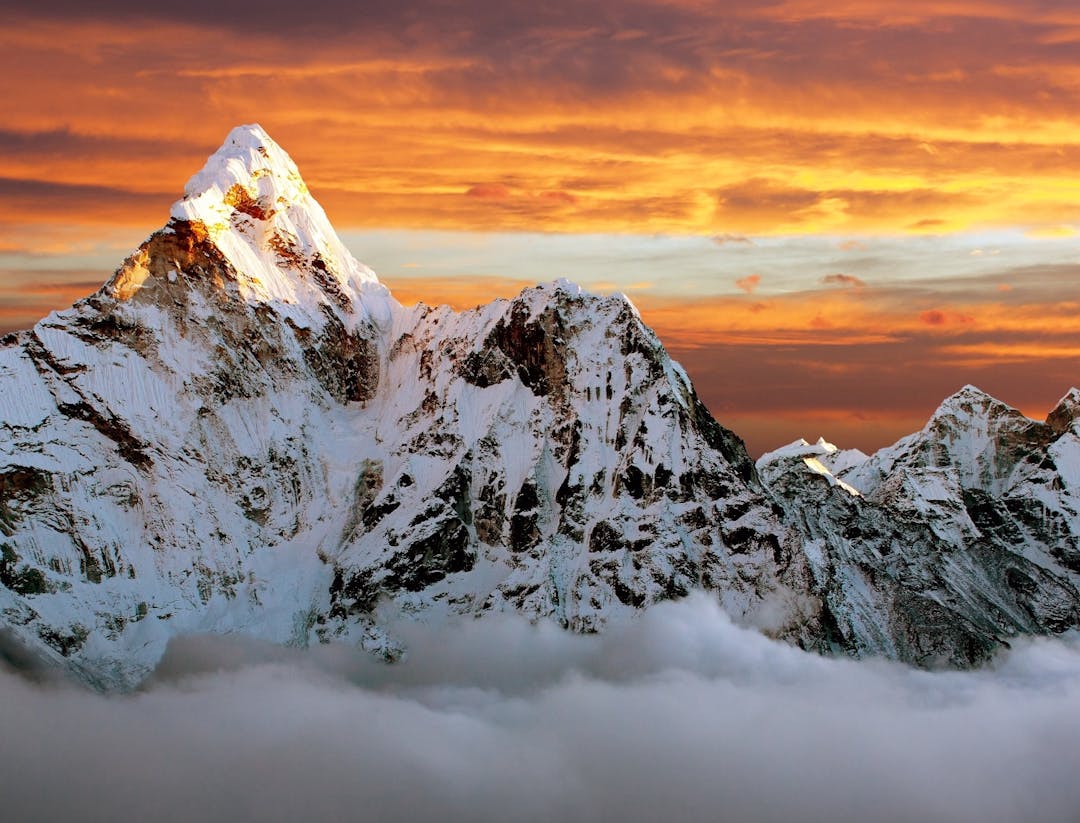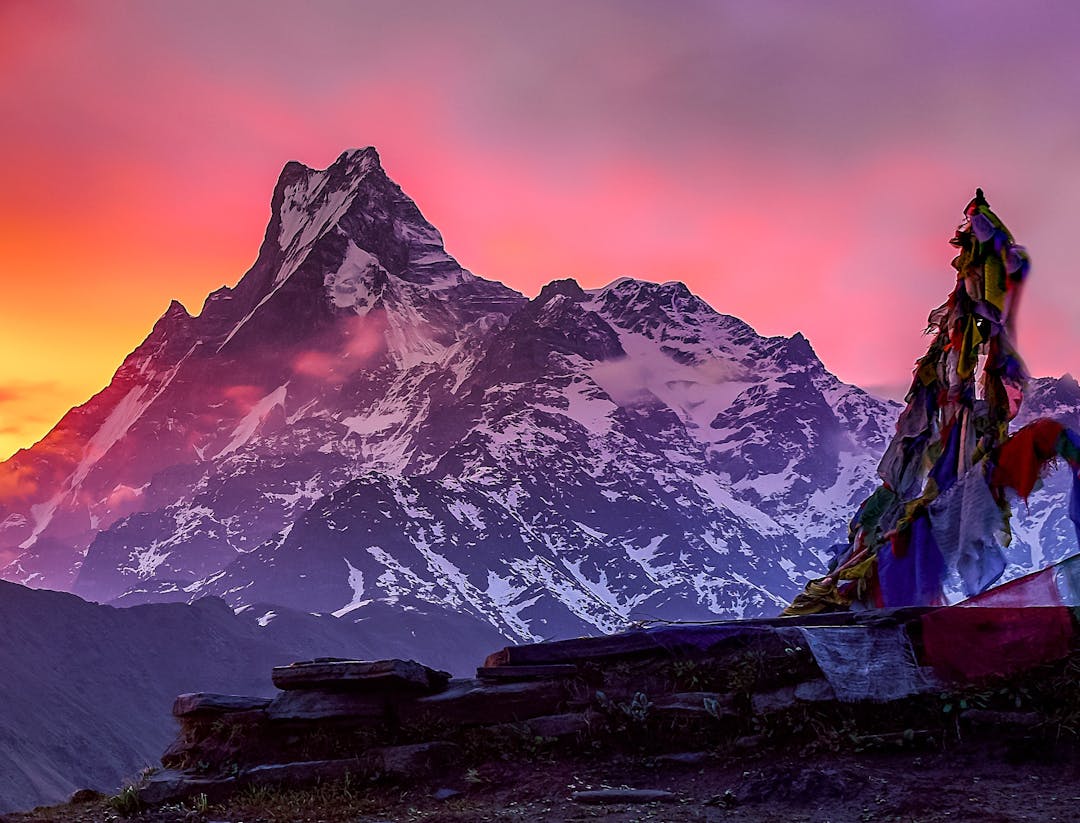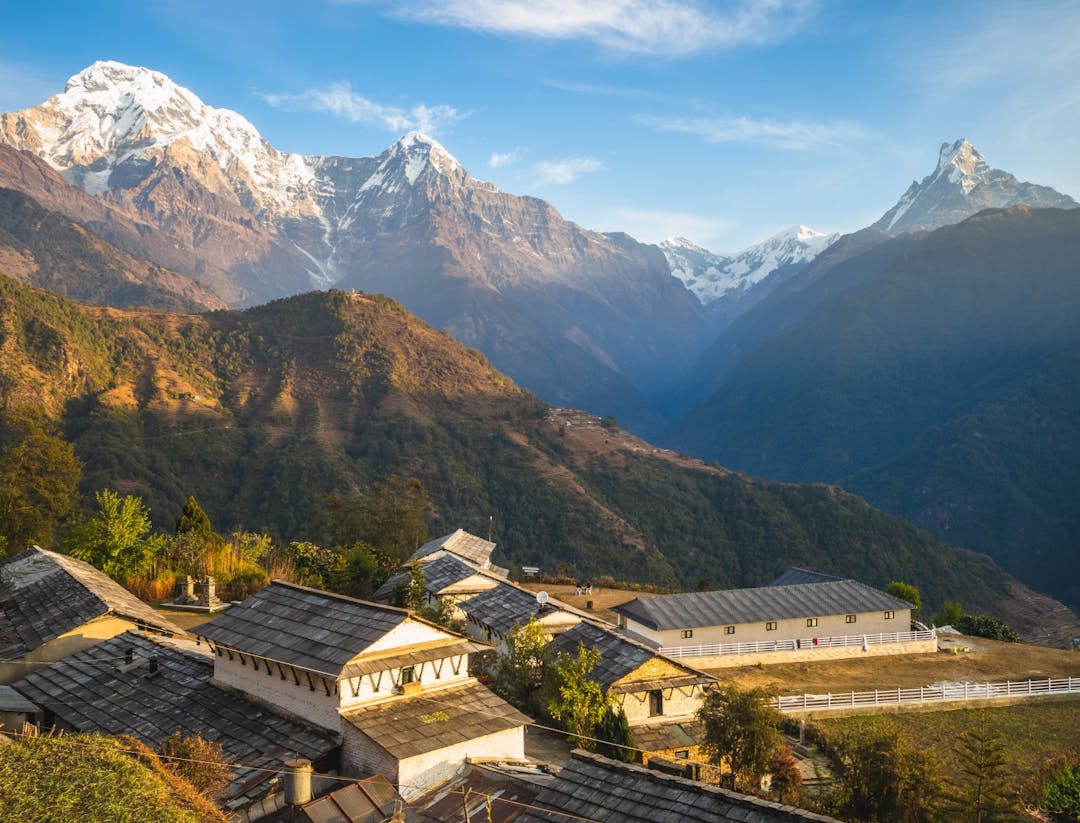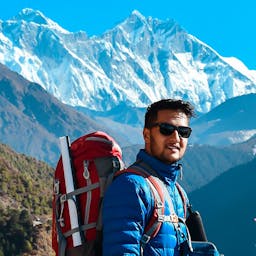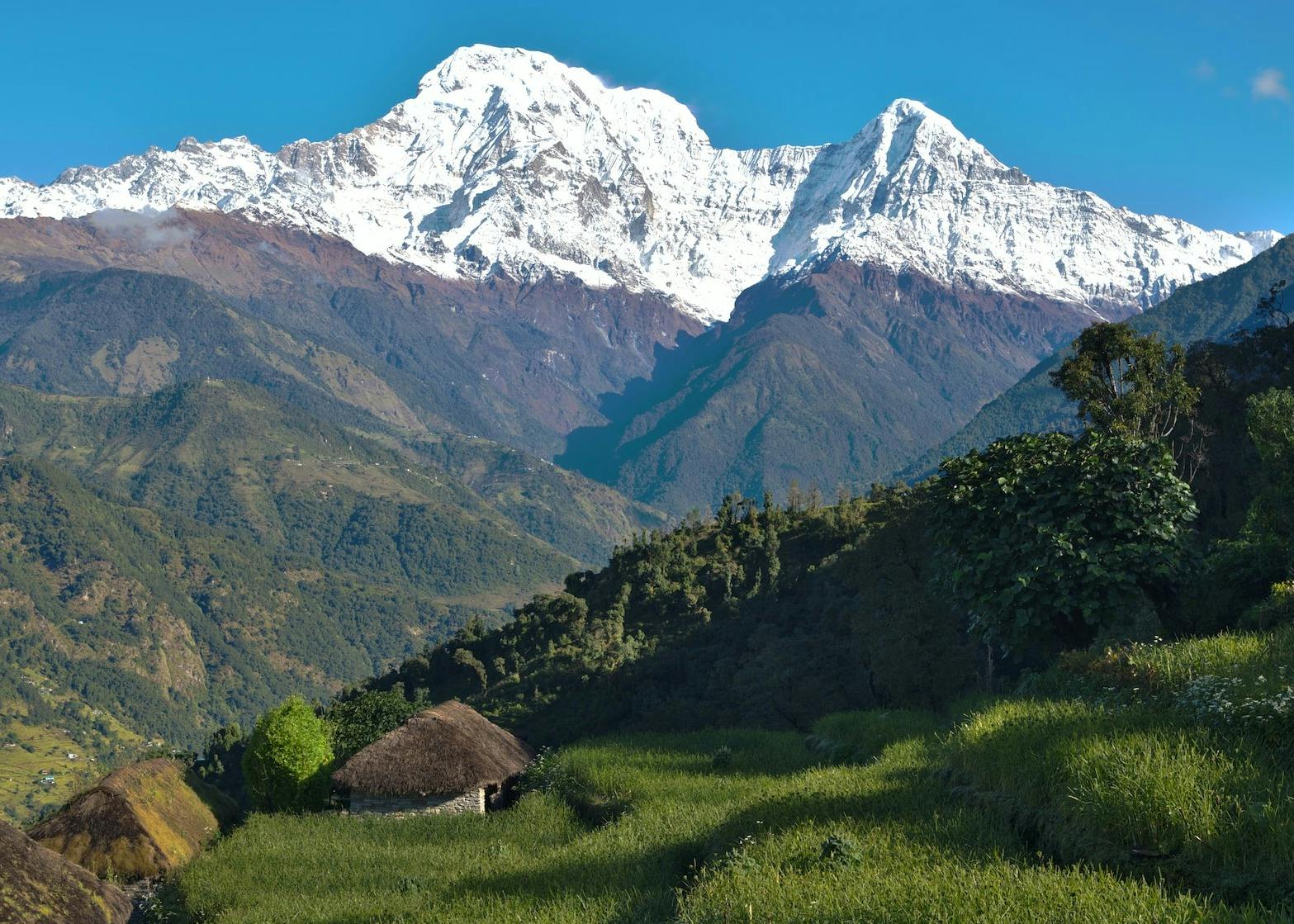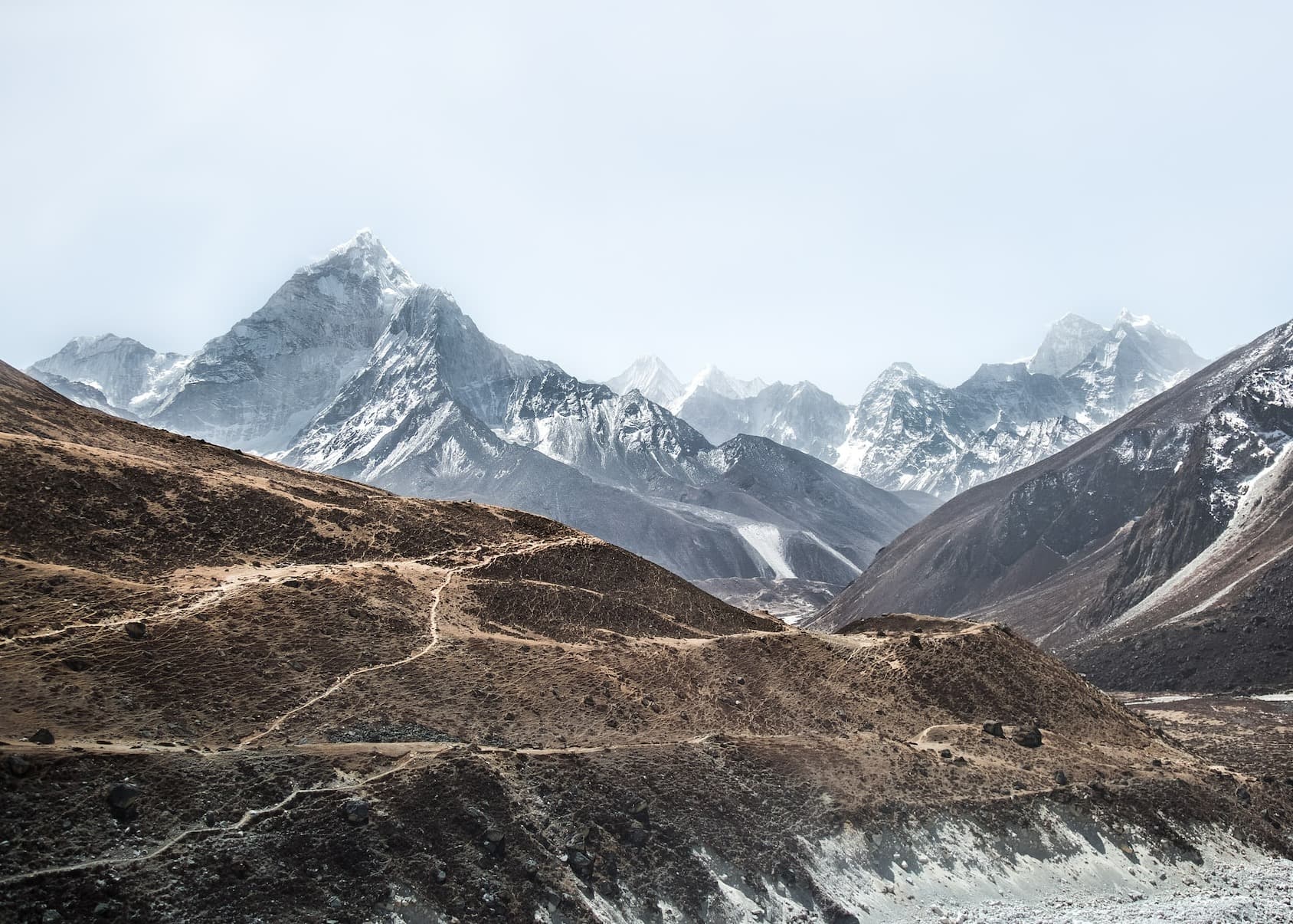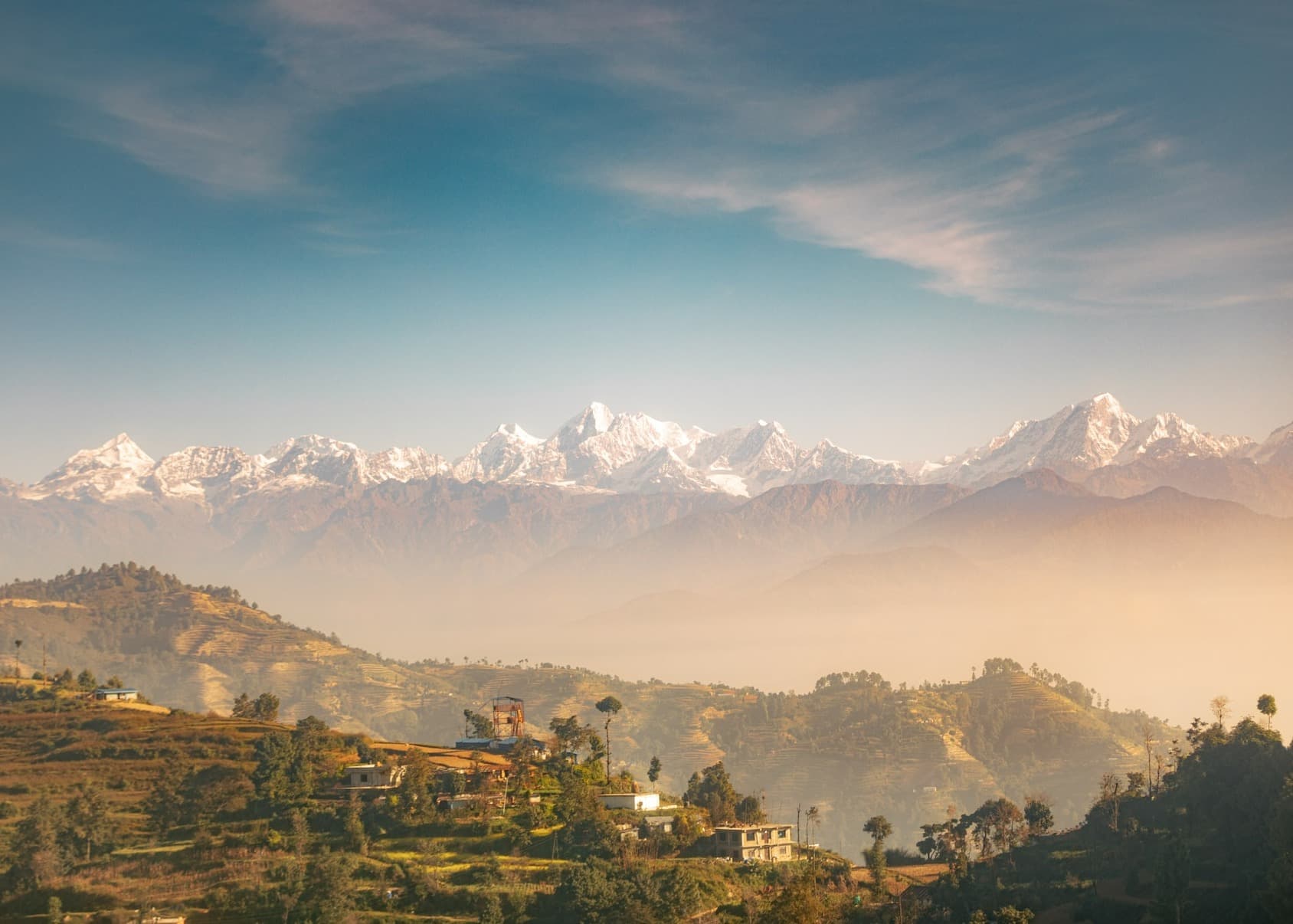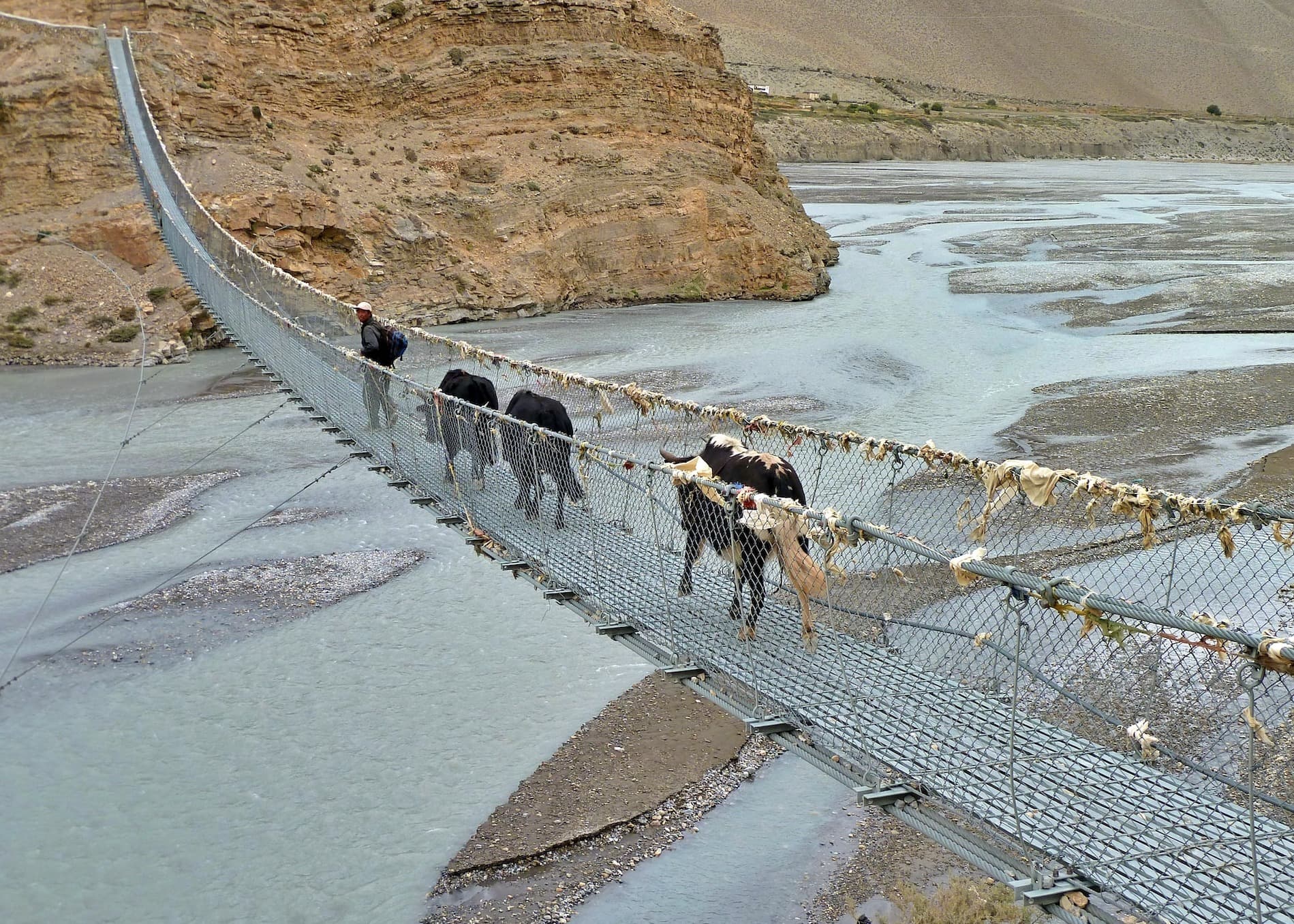- Mount Everest (8,848.86 meters / 29,031.7 feet)
- Mount K2 (8,611 meters / 28,251 feet)
- Mount Kanchenjunga (8,586 meters / 28,169 feet)
- Mount Lhotse (8,516 meters / 27,940 feet)
- Mount Makalu (8,485 meters / 27,838 feet)
- Mount Cho Oyu (8,188 meters / 26,864 feet)
- Mount Dhaulagiri (8,167 meters / 26,795 feet)
- Mount Manaslu (8,163 meters / 26,781 feet)
- Mount Nanga Parbat (8,126 meters / 26,660 feet)
- Annapurna I (8,091 meters / 26,545 feet)
- Gasherbrum I (8,080 meters / 26,509 feet)
- Broad Peak (8,047 meters / 26,401 feet)
- Gasherbrum II (8,035 meters / 26,362 feet)
- Shishapangma (8,027 meters / 26,335 feet)
Have you ever wondered what's the highest peaks in the world are? We all know about Mount Everest, but what about the others? The world is full of stunning natural wonders, and the highest peaks are definitely among them. So, let's dive into the 14 highest peak in the world and learn about their beauty and magnificence.
In a nutshell, the highest peak in the world is Mount Everest, with a height of 8,848.86 meters. But did you know that there are 13 other mountains that are also among the highest peaks in the world? These peaks include K2 (8,611 m / 28,251 ft), Kangchenjunga (8,586 m / 28,169 ft), Lhotse (8,516 m / 27,940 ft), Makalu (8,485 m / 27,838 ft), Cho Oyu (8,188 m / 26,864 ft), Dhaulagiri (8,167 m / 26,795 ft), Manaslu (8,163 m / 26,781 ft), Nanga Parbat (8,126 m / 26,660 ft), Annapurna (8,091 m / 26,545 ft), Gasherbrum I (8,080 m / 26,509 ft), Broad Peak (8,051 m / 26,414 ft), Gasherbrum II (8,035 m / 26,362 ft), and Shishapangma (8,013 m / 26,289 ft). Each of these peaks has its own unique beauty and characteristics that make them stand out from the rest.
If you have a passion for mountaineering and seek thrilling adventures, but want to start with smaller altitude mountains then Peak Climbing in Nepal is an exceptional recommendation for you. Nepal, a country blessed with awe-inspiring and majestic peaks that provide the ultimate playground for climbers.
If you are an adventure enthusiast or a nature lover, then this article is a must-read for you. In this article, we will delve into the details of each of these top 14 highest peak in the world, including their location, height, and interesting facts.
Mount Everest (8,848.86 meters / 29,031.7 feet)
Mount Everest is the highest mountain on Earth, standing at an elevation of 8,848 meters (29,029 feet) above sea level. It is in the Himalayas, on the border between Nepal and Tibet. Mount Everest is a part of the Seven Summits, a group of the highest mountains on each of the seven continents.
Mount Everest is named after Sir George Everest, a British surveyor who worked on the mapping of India in the 19th century. The mountain is known by the Nepali name Sagarmatha and the Tibetan name Chomolungma, both of which mean "goddess of the sky."
The first successful ascent of Mount Everest was made in 1953 by Sir Edmund Hillary of New Zealand and Tenzing Norgay, a Sherpa of Nepal. Since then, thousands of climbers have attempted to summit the mountain, with varying degrees of success. However, the ascent of Mount Everest is not without risks, and many climbers have lost their lives attempting to reach the summit.
Mount Everest, the world's highest peak towering at an awe-inspiring height of 8,848 meters, beckons adventurers from across the globe, and nestled at its base lies the renowned Everest Base Camp, a hallowed destination that enthralls trekkers with its rugged beauty and breathtaking vistas.
Kami Rita Sherpa holds the record for the most successful summits of Mount Everest. As of June 29, 2023, Kami Rita Sherpa has achieved an extraordinary 28 number of successful ascents to the summit of the world's highest peak.
Mount K2 (8,611 meters / 28,251 feet)
Mount K2, also known as Mount Godwin-Austen or Chhogori, is the second highest mountain peak in the world, after Mount Everest. It is located in the Karakoram range on the border between Pakistan and China. The peak has an elevation of 8,611 meters (28,251 feet) above sea level and is known for its steep and challenging ascent, which has earned it the nickname "Savage Mountain".
The first successful summit of Mount K2 was achieved by an Italian team on July 31, 1954, during the summer climbing season. The team was led by Ardito Desio and included Lino Lacedelli and Achille Compagnoni, who were the first climbers to reach the peak.
In terms of winter ascents, the first successful summit of K2 in winter was achieved by a Nepalese team on January 16, 2021, after decades of attempts by various expeditions. The team was led by Nirmal Purja and included Mingma Gyalje Sherpa, Mingma David Sherpa, Gelje Sherpa, Mingma Tenzi Sherpa, Pem Chhiri Sherpa, Dawa Temba Sherpa, Kili Pemba Sherpa, and Sona Sherpa.
K2 has a high fatality rate for climbers, with approximately one person dying on the mountain for every four who reach the summit. Despite the danger, K2 remains a popular destination for experienced mountaineers and adventurers seeking to challenge themselves in one of the world's most formidable natural environments.
Mount Kanchenjunga (8,586 meters / 28,169 feet)
Mount Kanchenjunga is the third highest mountain in the world, located on the border between Nepal and India. Its peak stands at an elevation of 8,586 meters (28,169 feet) and is part of the Himalayas Mountain range. Kanchenjunga is considered a sacred mountain by the local people and is revered as a deity.
The name "Kanchenjunga" comes from the Tibetan language, meaning "Five Treasures of Snow," referring to the five peaks that make up the mountain. The mountain is home to a diverse range of flora and fauna, including rare species such as the snow leopard, red panda, and Himalayan black bear.
The first successful summit of Kanchenjunga was made by a British expedition team led by Joe Brown and George Band on May 25, 1955. They climbed via the Southwestern face, which is now the standard climbing route.
Renowned for its breathtaking beauty, offers adventurous trekkers an unforgettable experience through the Kanchenjunga Base Camp Trek, a challenging yet rewarding journey into the heart of this majestic Himalayan peak.
Mount Lhotse (8,516 meters / 27,940 feet)
Mount Lhotse is a mountain located in the Himalayas, on the border between Nepal and Tibet. It is the fourth highest mountain in the world, with an elevation of 8,516 meters (27,940 feet). Lhotse is connected to Mount Everest, the highest mountain in the world, by the South Col, a vertical ridge that links the two peaks.
Lhotse is known for its steep and challenging climbs, including the Lhotse Face, a vertical wall of ice and rock that must be scaled to reach the summit. Despite being the fourth highest mountain in the world, Lhotse is not as well-known as some of the other mountains in the Himalayas, but it is a popular destination for experienced mountaineers who are looking for a challenging climb.
The first climbers to reach the summit of Mount Lhotse were a Swiss team led by Ernst Reiss and Fritz Luchsinger in May 1956. The team climbed the mountain via the West Face, which is now considered one of the most difficult and dangerous routes to the summit.
Mount Makalu (8,485 meters / 27,838 feet)
Mount Makalu is one of the highest peaks in the world, located in the Mahalangur Himalayas of eastern Nepal. It stands at 8,485 meters (27,838 feet) tall and is the fifth highest mountain in the world. Mount Makalu is a popular destination for mountaineers due to its challenging ascent and stunning views of the surrounding Himalayan range.
The mountain is known for its steep, rocky ridges and sharp summit pyramid, which is covered in snow and ice year-round. The Makalu Barun National Park, located in the surrounding region, is also home to a diverse range of flora and fauna, including rare and endangered species such as the red panda, snow leopard, and Himalayan black bear.
The first climbers to successfully summit Mount Makalu were a French team led by Jean Franco in May of 1955. The team included Lionel Terray, Jean Couzy, and Guido Magnone, among others. They ascended the southeast ridge of the mountain, which remains the standard climbing route to this day.
This awe-inspiring mountain not only captivates the hearts of mountaineers but also offers an unforgettable experience for trekkers, including the exhilarating Makalu Base Camp Trek.
Mount Cho Oyu (8,188 meters / 26,864 feet)
Mount Cho Oyu is the sixth highest mountain in the world, located on the border between Nepal and Tibet. It stands at an elevation of 8,188 meters (26,864 feet) and is considered one of the easier 8,000-meter peaks to climb, making it a popular destination for mountaineers.
Cho Oyu means "Turquoise Goddess" in Tibetan, and the mountain is considered sacred by Tibetans. It was first climbed in 1954 by a team of Austrian and Sherpa climbers.
The standard route to the summit of Cho Oyu follows the northwest ridge, and involves a mix of rock climbing, glacier travel, and high-altitude mountaineering. The climb typically takes several weeks and requires a high level of fitness and mountaineering experience.
Cho Oyu is located in the Himalayas and offers stunning views of the surrounding mountains, including Mount Everest to the east. The mountain is also home to a variety of wildlife, including Himalayan tahr, musk deer, and snow leopard.
Mount Dhaulagiri (8,167 meters / 26,795 feet)
Mount Dhaulagiri is the seventh highest mountain in the world, located in the north-central part of Nepal. Its name means "White Mountain" in Sanskrit, and it is also sometimes called the "Mountain of Storms" due to its reputation for difficult and dangerous climbing conditions.
Dhaulagiri rises to an elevation of 8,167 meters (26,795 feet) above sea level, and it is the highest mountain located entirely within Nepal. It is part of the Dhaulagiri Himal, a subrange of the Himalaya that runs parallel to the Annapurna massif.
The first successful ascent of Dhaulagiri was made in 1960 by a Swiss-Austrian team, and since then it has become a popular destination for experienced mountaineers. However, the mountain is still considered one of the most challenging climbs in the world, with steep slopes, unpredictable weather, and technical difficulties requiring advanced mountaineering skills.
Mount Manaslu (8,163 meters / 26,781 feet)
Mount Manaslu is the eighth highest mountain in the world, with an elevation of 8,163 meters (26,781 feet) above sea level. It is located in the Mansiri Himal subrange of the Nepalese Himalayas in the Gorkha District of Nepal. The name "Manaslu" means "Mountain of the Spirit" in the local dialect, and it is considered one of the most beautiful peaks in the Himalayas.
The mountain was first climbed by a Japanese expedition in 1956, and since then, it has become a popular destination for mountaineers from around the world. The Manaslu region offers trekkers and climbers a unique and remote experience, with stunning views of the Himalayan landscape and an opportunity to interact with the local communities and culture.
Mount Manaslu is known for its challenging climbing routes, which require advanced mountaineering skills and experience. The climb is particularly demanding due to the altitude, technical difficulty, and unpredictable weather conditions. Nevertheless, with proper training and preparation, climbers can summit this majestic peak and enjoy the rewards of this unforgettable adventure.
Mount Nanga Parbat (8,126 meters / 26,660 feet)
Mount Nanga Parbat is the ninth tallest mountain in the world, located in the Himalayas in the Gilgit-Baltistan region of Pakistan. It rises to an elevation of 8,126 meters (26,660 feet) above sea level and is also known as "The Killer Mountain" due to the extreme difficulty and danger of climbing it.
The first successful summit of Nanga Parbat was achieved by a joint Austrian-German expedition in 1953. The team was led by Austrian climber Hermann Buhl, who managed to reach the summit alone without supplemental oxygen or high-altitude porters.
Buhl's ascent of Nanga Parbat was considered a major accomplishment in the mountaineering world, as it was the first time that any climber had successfully reached the top of an 8,000-meter peak alone.
Despite the risks, Nanga Parbat continues to be a popular destination for experienced mountaineers, and many have successfully climbed it over the years.
Annapurna I (8,091 meters / 26,545 feet)
Annapurna I is one of the most famous and challenging peaks in the world, located in the Himalayas in Nepal. It is the 10th highest mountain in the world, with an elevation of 8,091 meters (26,545 feet) above sea level.
The area around Annapurna I is also home to many indigenous communities, including the Gurung and Thakali people, who have a rich cultural heritage and a deep connection to the mountains.
Herzog and his team successfully reached the summit of Annapurna I on June 3, 1950, becoming the first climbers to do so. However, the ascent was not without its costs. Several members of the expedition suffered frostbite and other injuries, and Herzog himself lost all of his fingers and toes due to frostbite.
The Annapurna Base Camp Trek, a popular trekking destination in Nepal, offers breathtaking views of the majestic Mount Annapurna, one of the highest peaks in the world.
Gasherbrum I (8,080 meters / 26,509 feet)
Gasherbrum I, also known as Hidden Peak, stands at an elevation of 8,080 meters (26,509 feet). It is located in the Karakoram Range on the border of China and Pakistan. Gasherbrum I is one of the notable peaks in the region, renowned for its challenging climbing routes and impressive beauty.
The mountain's name, Gasherbrum, is derived from the Balti language, which means "beautiful mountain." It is often referred to as Hidden Peak due to its somewhat concealed location. Gasherbrum I is part of the Gasherbrum Massif, a group of high peaks in the Karakoram Range. The massif includes six other Gasherbrum peaks, namely Gasherbrum II to Gasherbrum VI.
The first successful ascent of Gasherbrum I took place in 1958 by an American expedition led by Nicholas Clinch. Pete Schoening and Andy Kauffman were the first climbers to reach the summit.
Broad Peak (8,047 meters / 26,401 feet)
Broad Peak, with an elevation of 8,047 meters (26,401 feet), is a prominent mountain located in the Karakoram Range, on the border between China and Pakistan.
The mountain is known as Broad Peak due to its wide summit. It was given this name by the British explorer William Martin Conway during his exploration of the Karakoram Range in 1892.
The first successful ascent of Broad Peak was made in 1957 by an Austrian expedition led by Marcus Schmuck and Fritz Wintersteller, along with two Pakistani climbers, Hermann Buhl and Kurt Diemberger. They reached the summit via the West Ridge.
Broad Peak has several subpeaks, including Broad Peak Central (8,010 meters) and Broad Peak North (7,550 meters). Broad Peak is located in close proximity to other notable mountains, such as Gasherbrum II, Gasherbrum IV, and K2.
Gasherbrum II (8,035 meters / 26,362 feet)
Gasherbrum II, standing at an elevation of 8,035 meters (26,362 feet), is a prominent mountain located in the Karakoram Range, on the border between China (Xinjiang region) and Pakistan (Gilgit-Baltistan region).
Gasherbrum II is also known as K4, as it was the fourth peak in the Karakoram Range to be surveyed. The first successful ascent of Gasherbrum II took place in 1956. An Austrian expedition led by Fritz Moravec and Josef Larch became the first to reach the summit. They climbed the mountain via the southwest ridge.
Several routes have been established for climbing Gasherbrum II, including the normal route from the southwest ridge. Alternative routes from the southeast and northeast sides have also been attempted.
Shishapangma (8,027 meters / 26,335 feet)
Shishapangma, standing at an elevation of 8,027 meters (26,335 feet), is a significant mountain located in the Langtang Himal region of the Himalayas. It lies entirely within Tibet's autonomous region, near the border with Nepal.
The name "Shishapangma" is Tibetan in origin, which means "crest above the grassy plains." It is also spelled as Xixabangma or Gosainthān.
The first successful ascent of Shishapangma occurred in 1964. A Chinese expedition led by Xǔ Jìng successfully reached the summit. It was the last of the 8,000-meter peaks to be summited.
Shishapangma holds spiritual significance for the local Tibetan population. It is considered one of the holy mountains in Tibetan Buddhism and is associated with the deity Chenresig (Avalokiteshvara).
In conclusion, the 14 highest peaks in the world are some of the most awe-inspiring natural wonders on the planet. Each of these mountains has its own unique features and challenges for climbers, but all offer breathtaking views and a sense of accomplishment to those who reach their summits.
Whether you're an experienced mountaineer or simply an armchair adventurer, these peaks are sure to inspire and captivate you with their beauty and majesty. From the towering heights of Mount Everest to the rugged beauty of K2 and beyond, these peaks represent the pinnacle of human achievement and the raw power of nature.

